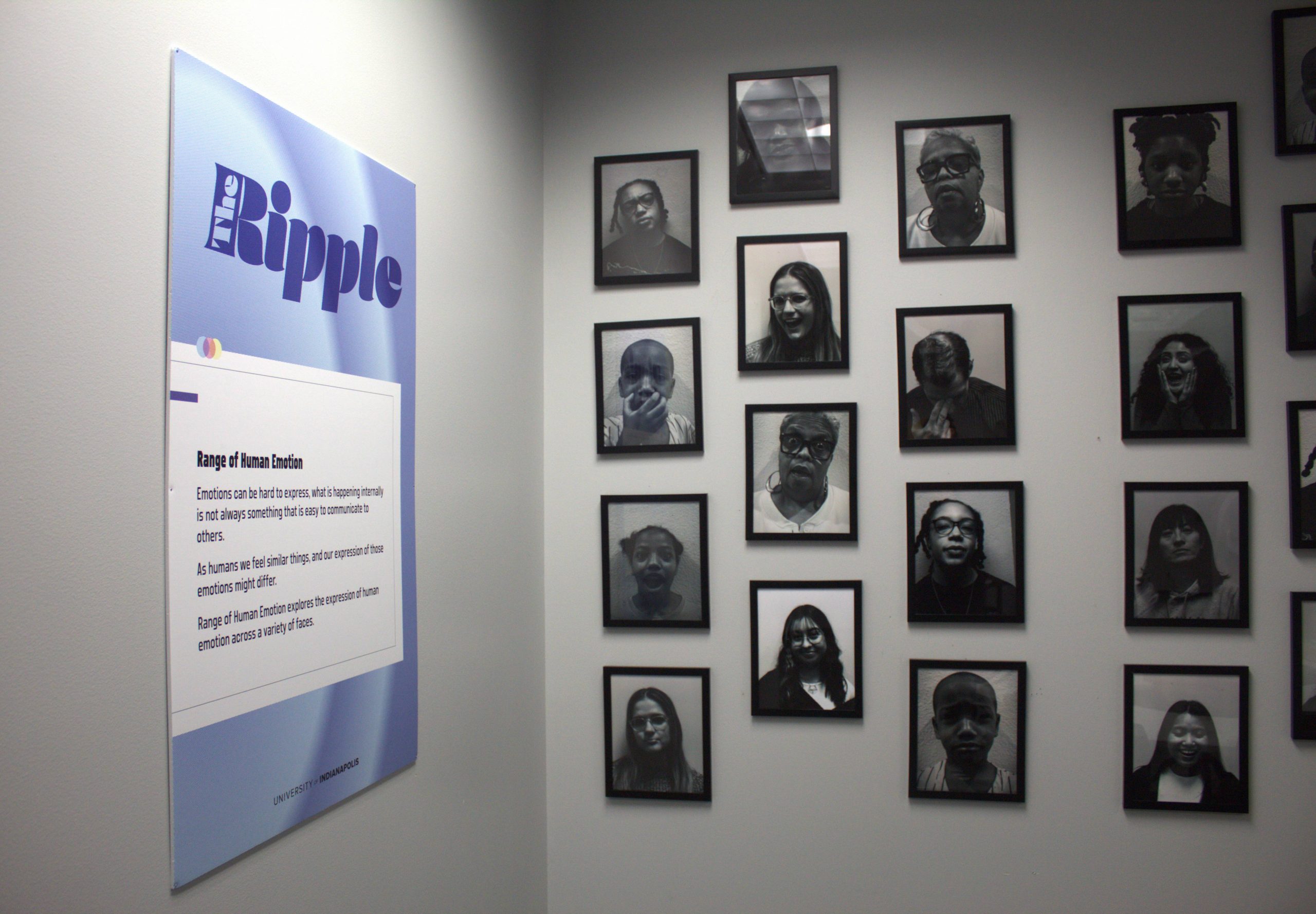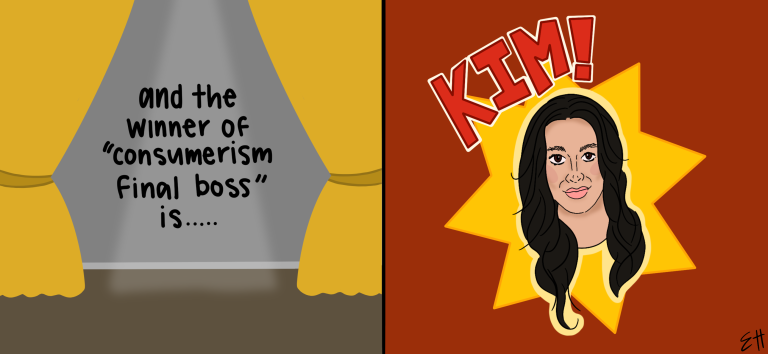The University of Indianapolis Office of Inclusive Excellence and Retention Strategy showcased a new immersive gallery exhibition titled “Ripple,” according to the OIE Instagram. Located in the Art Experience Lab in Schwitzer Student Center, “Ripple” debuted Jan. 25 as this semester’s art experience which is centered around exploring the range of human emotion, according to the OIE Instagram.

Inside Higher Ed conducted a study in 2021 regarding students and whether or not they felt their voices were being heard. They found that while 64% of students said that there was a way to share their feedback about their college experience, only 29% feel like their college actually cared about it, some students citing that the college will not do anything for them unless it affects them financially. According to the Assistant Director and Title IX Coordinator Cari Freed, the Art Experience Lab was created to help students feel heard.
According to Freed, the first exhibit in the Art Experience Lab was in the summer of 2022. Their goal is to highlight marginalized communities, members, and student voices, Freed said.
“Our first exhibit opened on June 10th of 2022 and it was called ‘Ode To Blackness,’” Freed said. “The art experience was actually generated out of this need for students to have touch points and representation. So our exhibits always focus on some sort of marginalized or underrepresented group, always highlight some sort of marginal or underrepresented artist. And we also try really hard to make sure that the curation of the gallery is led by student voice and student opinion.”
According to the OIE Instagram page, this year’s featured artist is Drece Guy. . According to the Drece L.Guy Fine Art website, he is originally from Fort Wayne. He participates in a variety of exhibitions based on an original interest in Ernie Barnes and graffiti in 1980s breakdancing videos which transitioned into his own voice in contemporary art, according to the website.
“Drece is a self-taught artist who continues to formulate his style and voice through the pieces that he creates,” according to the website. “Drece has an interest in contemporary art and describes painting as a form of expression that exudes freedom, joy and peace. Drece is inspired by creation, his faith and gospel music, which guides him to create bright, bold, and vivid pieces.”
According to Freed, the collaboration of so many artists and groups allows students to see that the university is on their side. Getting a degree is not the most important thing, it is every student becoming their best selves.
“There’s going to be parts that as you go into the gallery that you’ll recognize spaces and you’ll see groups and organizations that have helped bring these things together,” Freed said. “And I think that once we see all of these organizations working together, you’ll understand that the university really is on your side and that we’re putting together the infrastructure to make sure you have the things that you need, that we care about your emotional needs, we care about your physical needs. We care if your belly is hungry, we care if your head hurts all of those things. And it’s not just about you getting a degree here, we want to see you become your best self.”
According to Freed, the Office of Inclusive Excellence and Retention Strategy is more than a place for underrepresented students. It is a place with resources, connections and mentorship. Freed said any time a student is feeling disconnected or lost, they are encouraged to go to OIE to get in touch with people who can help find answers and support you through clubs, RSOs or professionals.
“Of course, we want to make sure that students who don’t have representation, find a place, but, more than anything, OIE is there to help you become the person you wanna be,” Freed said. “So in our office, you know, things like bias reporting, Title IX reporting, programs, mentorship, all exist. And those are things that outside of your academic experience help to make sure that your experience is all that it can be.”






